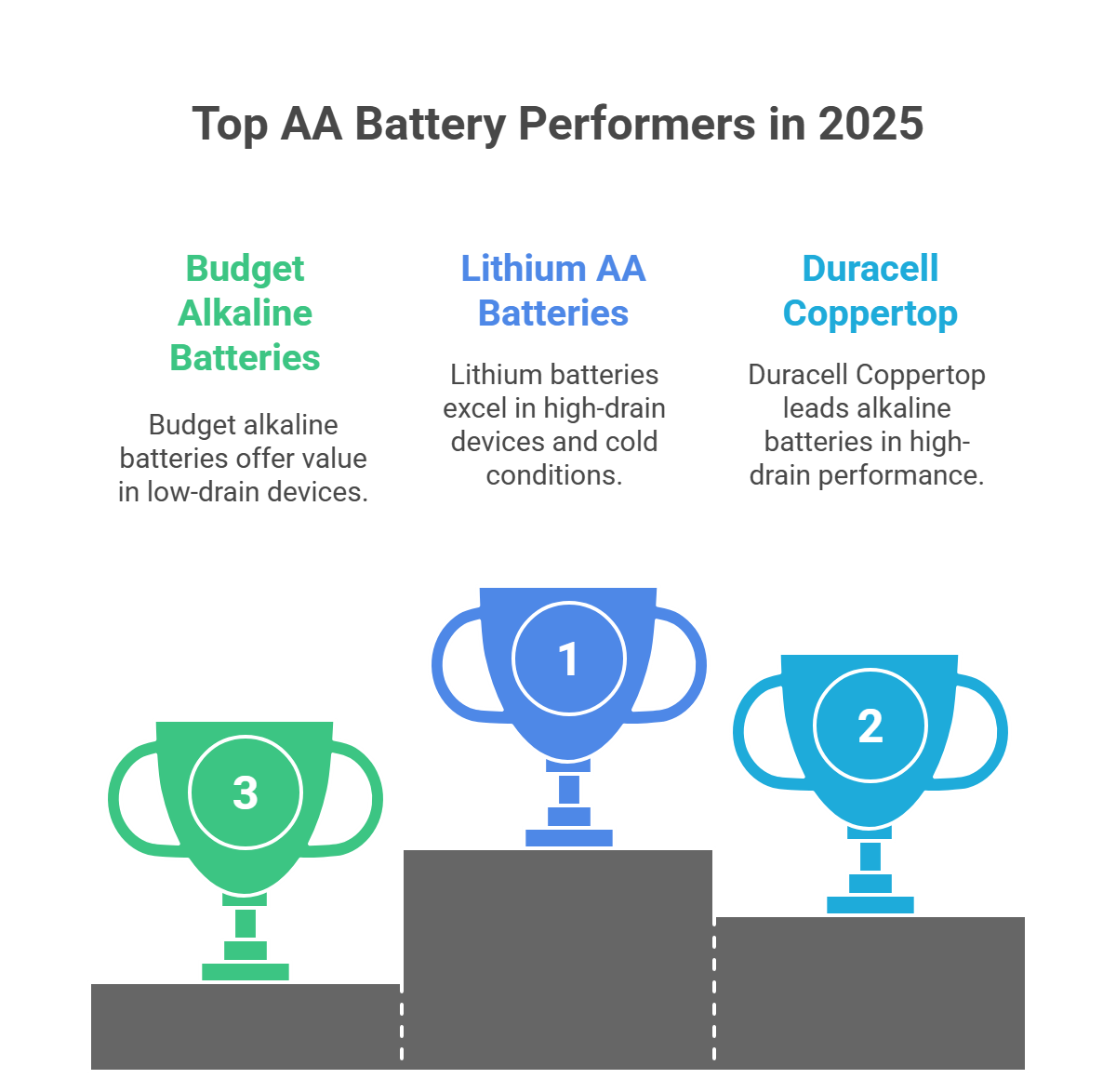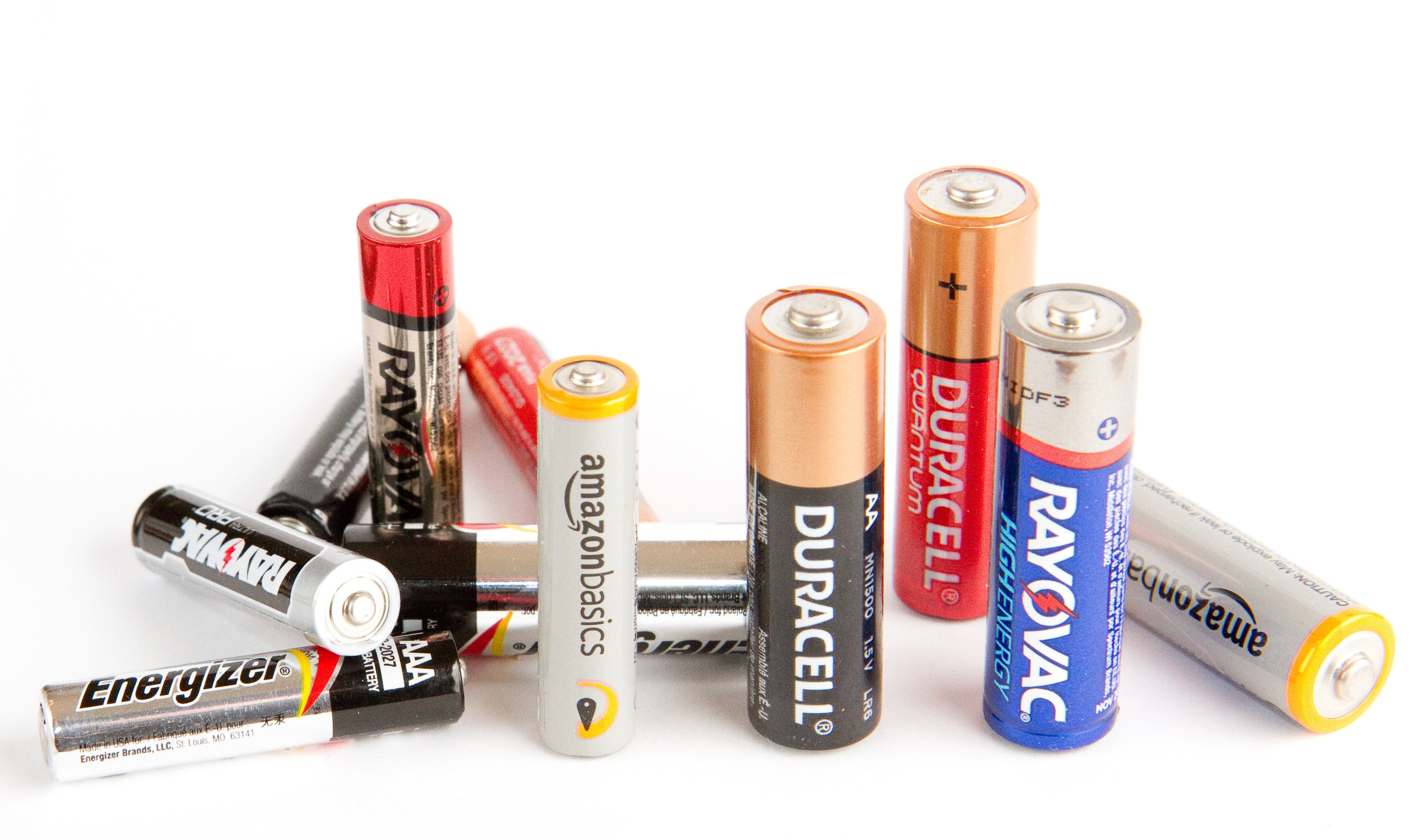There’s a drawer in every home that breeds batteries—AA, mostly, rolling around with old takeout menus or the odd paperclip. But when your speaker croaks or the kids’ toys stall mid-party, suddenly the choice between Energizer, Duracell, or those off-brand deals feels way bigger than it should. Inspired by far too many torches going dark during winter storms, this post dives headfirst into the surprising world of AA batteries: who goes the distance, who fizzles in the freezer, and what happens when you drop a ‘dead’ cell? Let’s bust some battery myths and get real about the gadgets we rely on every day.
Juice Wars: Comparing Battery Capacity in 2025
When it comes to battery capacity comparison in 2025, the landscape is more competitive—and surprising—than ever. Testers put a wide range of AA batteries through real-world discharge trials, clocking hours of runtime and measuring every milliamp hour (mAh) squeezed from each cell. The results? A fascinating mix of expected winners, budget upsets, and a clear edge for lithium technology.
Among alkaline batteries, Rayovac Fusion emerged as a standout, boasting a measured capacity of 2,498mAh. As one tester put it:
“The Rayovac Fusion moves into the lead at two thousand four hundred ninety eight milliamp hours.”
Other heavy-hitters like Energizer Max (2,459mAh) and Duracell (2,456mAh) were close behind, consistently lasting over eight hours in controlled discharge tests. These brands are often considered the best AA batteries 2025 for users who want reliability and long-lasting performance.
Yet, the field wasn’t just dominated by big names. Value brands such as ACDelco (2,133mAh) and AmazonBasics (2,026mAh) hovered between 1,800 and 2,200mAh, offering decent performance at a lower price point. Sometimes, these budget options even matched premium brands in weight and internal resistance, challenging the assumption that higher price always equals better performance. Research shows that some lesser-known AA batteries can rival established brands in real-world capacity, making them a smart pick for cost-conscious buyers.
But the true game-changers in the AA battery comparison 2025 were lithium cells. Blinx Power and Energizer Lithium soared past their alkaline rivals, with measured capacities of 3,728mAh and 3,707mAh, respectively. These lithium AA batteries not only outlasted every alkaline competitor but also maintained higher voltage under load, making them ideal for high-drain devices and cold environments. Studies indicate that lithium AA batteries consistently outperform alkaline for both longevity and capacity, despite a higher upfront cost.
It’s worth noting that battery weight sometimes hints at capacity—heavier cells like the ProCell (24.6g) often pack more juice, but this isn’t a strict rule. Internal resistance and voltage stability also play key roles in real-world performance, especially for demanding electronics.
In summary, the battery capacity and voltage comparison for 2025 reveals a dynamic market: premium alkaline batteries still deliver, budget brands can surprise, and lithium AA batteries set a new standard for long-lasting AA batteries.
Ice Age, Battery Edition: Who Survives the Deep Freeze?
When it comes to cold temperature battery performance, not all AA batteries are created equal. The freezer test—set close to zero degrees Fahrenheit—offers a real-world simulation of what happens when your devices face winter’s harshest conditions. It’s a scenario familiar to anyone who’s tried to use a flashlight or remote in an unheated garage, on a camping trip, or during a winter power outage. The results? A dramatic divide between battery chemistries.
Most alkaline batteries simply couldn’t keep up. After hours in the deep freeze, brands like Thunderbolt Magnum, EBL, ACDelco, PowerMax, AmazonBasics, and even the regular Energizer all dropped to around 0.75 volts. The Varda fared slightly better, but at 0.83 volts, it was still struggling. As one observer put it:
“The Varda is struggling with the cold temperature at only zero point eight three volts.”
These numbers matter. Many devices require a minimum voltage to function properly, and dropping below 1.0V can mean flickering screens, sluggish performance, or outright failure. For anyone comparing AA batteries in 2025, this is a critical point—especially if you need reliability in cold weather.
On the other hand, lithium AA batteries like Tipson and EnergyTech held their ground, maintaining voltages above 1.0V even after extended cold exposure. Research shows that lithium’s superior chemistry resists the voltage sag that plagues alkalines when temperatures plummet. This makes lithium the clear winner in the lithium vs alkaline batteries debate for cold climates and high-drain devices.
Why does this matter? If you’re planning outdoor adventures, storing emergency kits, or just want your gadgets to work in the garage all winter, cold temperature battery performance should be at the top of your checklist. The cold test exposes which brands are fit for the challenge—and which are best left for milder conditions.
Most alkaline AAs: ~0.75V after freezing
Varda: 0.83V
Lithium AAs (Tipson, EnergyTech): >1.0V
The takeaway is clear: in the world of AA battery comparison 2025, lithium batteries are built to survive the deep freeze, while many alkalines simply can’t keep up when the temperature drops.
High-Drain Showdown: Which Batteries Keep Up With Power-Hungry Devices?
When it comes to battery performance under load, not all AA batteries are created equal—especially when powering high-drain devices like digital cameras, RC toys, or powerful flashlights. In 2025, battery performance under load testing has become a crucial factor for anyone seeking long-lasting AA batteries for devices that demand a lot of juice in short bursts.
To simulate real-world conditions, a rigorous 1.25A load test was used. This stress test quickly separates the contenders from the pretenders. Most standard alkaline batteries, including familiar names like Amazon Basics, Panasonic, and Rayovac Fusion, hovered around 1.21V under heavy use. That’s serviceable, but not stellar for power-hungry gadgets.
Some brands, however, stood out. The Duracell Coppertop led the alkaline pack, clocking in at an impressive 1.36V under load. As one tester put it:
“The Duracell came out on top at one point three six volts with a load of one point two five amps.”
Close behind, Kirkland and Energizer Max both managed 1.28V, showing that not all value brands lag behind the big names. But the real stars of high-drain device battery performance were the lithium cells. Brands like Tipson and EnergyTech hit a remarkable 1.43V under stress, while Allmax and PowerOW also performed strongly at 1.36V. These results highlight a key finding from recent research: lithium AA batteries often outperform alkaline in both longevity and voltage stability, especially when devices draw a lot of current.
It’s important to note that a battery’s average voltage under load doesn’t just affect how long it lasts—it can also determine whether your device works at all. A sudden voltage drop is the silent killer for sensitive tech. That’s why photographers, RC enthusiasts, and anyone relying on consistent power should pay close attention to battery performance under load.
In summary, while many batteries promise long life, not all can handle the demands of high-drain devices. The best performers—like Duracell Coppertop among alkalines and Tipson or EnergyTech among lithiums—maintain higher voltages under pressure, ensuring your gear keeps running when it matters most. For those who depend on reliable, long-lasting AA batteries for devices, these results are more than just numbers—they’re peace of mind.
Bargain Bin or Bust? Myth-Busting Surprises in AA Battery Value
When it comes to cost analysis AA batteries, the results might surprise even the most brand-loyal shoppers. In a series of hands-on tests, budget brands like Varta and Thunderbolt—costing as little as $0.20 to $0.23 per cell—were put head-to-head with pricier competitors. The question on everyone’s mind:
“Are cheaper batteries just as good as the name brands for less than half the cost?”
Initial specs revealed that Varta, made in Indonesia for Energizer, weighed in at 23.12 grams and started at 1.61 volts with a low internal resistance of 87 milliohms. Thunderbolt, a Harbor Freight staple, mirrored these specs closely. EBL, another budget contender from China, was the lightest at 21.93 grams but had a slightly higher internal resistance of 97 milliohms. ACDelco, made in Vietnam, also joined the lineup at $0.30 per battery.
But specs only tell part of the story. Real-world value for money AA batteries comes down to performance. Using a standard 0.3-amp discharge rate, all four brands were drained to empty. The results? Varta lasted 6 hours and 9 minutes, Thunderbolt 7 hours and 10 minutes, EBL an impressive 7 hours and 34 minutes, and ACDelco 7 hours and 27 minutes. In terms of capacity, EBL led the pack with 2,248 mAh, followed by ACDelco at 2,213 mAh—both outperforming their low price tags.
These findings challenge the idea that only premium brands offer the best alkaline batteries performance. Research shows that brand marketing doesn’t always guarantee better results. In fact, some bargain batteries deliver comparable or even superior performance in low-drain devices, making them a smart pick for budget-conscious consumers.
And for those who remember the childhood trick: yes, dead batteries really do bounce higher. Tests confirmed that a nearly depleted Duracell bounced noticeably higher than a fully charged one, adding a quirky twist to myth-busting battery performance.
Of course, unit cost is only part of the equation. If a cheaper battery dies twice as fast, the savings disappear. That’s why cost analysis AA batteries should always consider total lifespan, not just the sticker price. And with rechargeable battery longevity improving—some lasting thousands of cycles—the math on long-term value keeps evolving.
Final Thoughts: The Right Cell for the Right Job in 2025
When it comes to finding the best AA batteries in 2025, there’s no single champion for every scenario. Research shows that lithium AA batteries consistently outperform alkalines, especially in high-drain devices and extreme cold. In recent AA battery test comparisons, lithium cells kept running while alkalines faltered—sometimes dropping to just 0.75 volts in freezing conditions. That’s a huge difference if you rely on your gear in emergencies or harsh environments.
But performance isn’t the only factor. Lithium AAs, while they offer long-lasting power for demanding devices, come at a premium—typically $1.25 to $3.25 per cell. Alkalines, on the other hand, are much more budget-friendly, often costing between $0.20 and $0.88 per cell. For those who only occasionally use battery-powered devices, alkalines can be a practical choice. As one tester put it,
“Lithium AA batteries outlast alkalines, but price can be a deciding factor for many.”
Rechargeable AA batteries are another strong contender, especially for heavy users. Studies indicate that modern rechargeables offer impressive longevity, with thousands of charge cycles possible before any noticeable drop in performance. If you’re running game controllers, cameras, or smart home devices, the eco-friendly and cost-effective nature of rechargeables is hard to beat. Still, not every device plays nicely with rechargeables, and some users find mixing and matching battery types works best for their unique needs.
Ultimately, the right AA battery depends on your usage context, device quirks, and budget. There’s rarely a universal “best” option—sometimes the smartest move is to mix lithiums for emergencies, rechargeables for daily drivers, and alkalines for the occasional remote or clock. The long-lasting AA batteries for devices you choose should match your lifestyle, not just the marketing claims on the package.
As 2025 brings new battery tech and bold claims, the classics endure. Whether you’re after rechargeable AA battery longevity or just a reliable cell for your flashlight, focus on performance, value, and your own daily headaches. The best AA battery is the one that fits your life—no more, no less.
TL;DR: Don’t buy blindly—lithium AA’s outlast alkalines, cheap brands don’t always mean poor performance, and freezing weather is the ultimate test. The winning battery in 2025? It depends on your gear and grit.

Video below by Project-Farm, originally posted on YouTube talking about different batteries.

Comments
Post a Comment